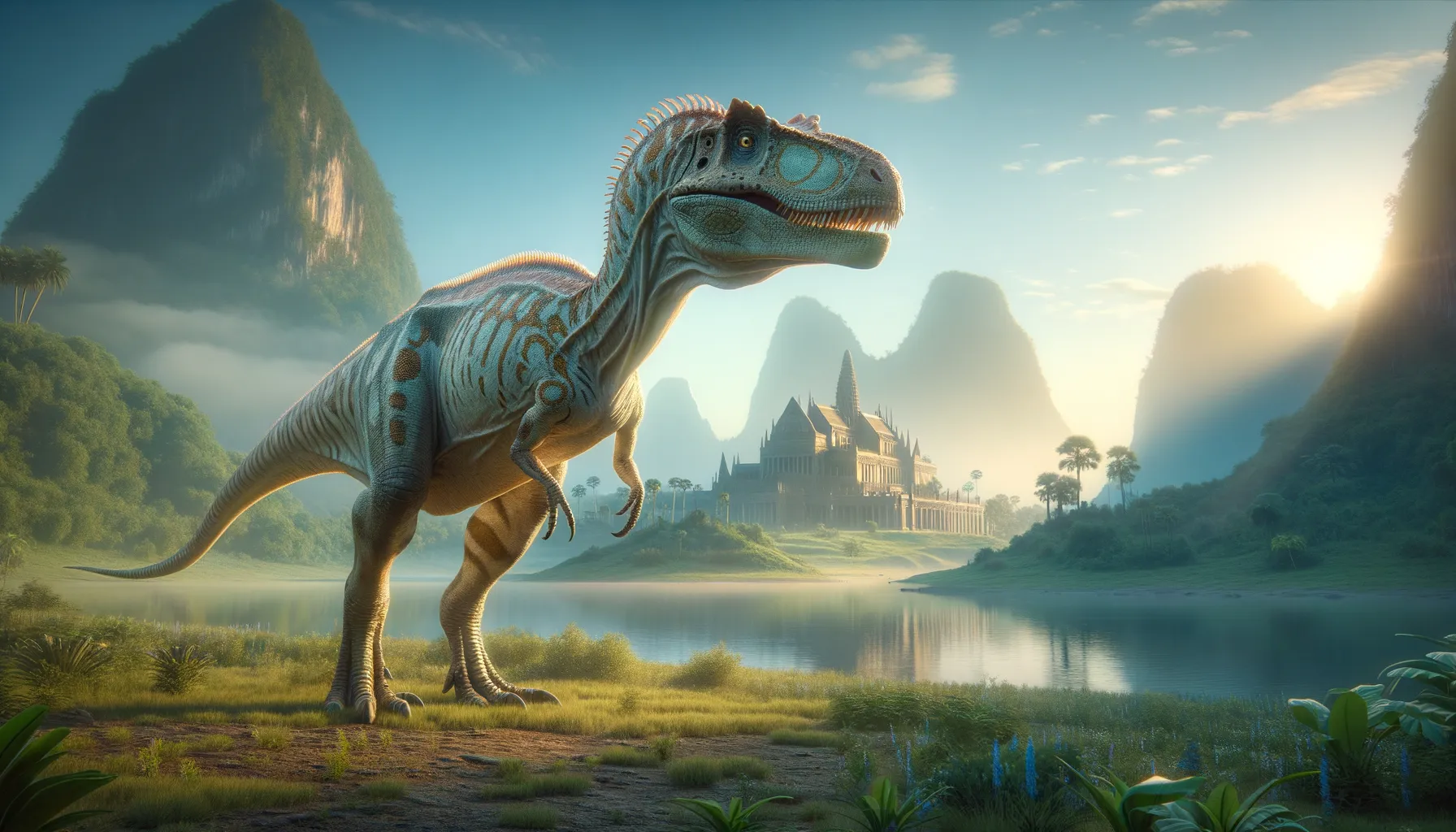
Siamodracon
Ancient navigator through dense forests.
Period
Cretaceous
Length
Measured about 8 to 10 meters long.
Height
Stood about 3 meters tall.
Weight
Weighed around 700 to 900 kilograms.
Siamodracon was a fascinating dinosaur species from the Cretaceous Period, primarily known for its unique skeletal features and medium build. This dinosaur was adapted to life in diverse terrains, showcasing a blend of strength and versatility. Its discovery in Southeast Asia has contributed significantly to our understanding of dinosaur distribution and the ecological dynamics of the ancient world.
Diet
Siamodracon was primarily an herbivore, feeding on a variety of ancient flora. Its diet included fibrous plants, leaves, and some fruits available in its environment. Its strong jaws and specialized teeth allowed it to process tough plant material efficiently.
Hunting
Though mainly a plant-eater, Siamodracon may have occasionally scavenged for smaller creatures or carrion to supplement its diet. Its movements suggested it was more adept at foraging rather than active hunting. Its lifestyle likely revolved around finding plentiful plant resources and avoiding large predators.
Environmental challenges
Siamodracon faced numerous environmental challenges, including climate fluctuations that affected food availability. Competition with other herbivores demanded efficient foraging and resource use. Predation pressure from large carnivorous dinosaurs also posed a constant threat. Adapting to these challenges required cognitive and physical resilience.
Speed
Moderate runner, adapted for maneuverability.
Lifespan
Approximately 25 to 30 years.
First discovery
First discovered in Thailand in the late 1990s.
Fun Facts
- Siamodracon was a dinosaur that roamed Earth during the Jurassic period.
- This dinosaur was named after the region where its fossils were discovered, which is now part of Thailand.
- Siamodracon is believed to be a part of the sauropod family, known for their long necks and massive sizes.
- Despite their enormous sizes, sauropods like Siamodracon were herbivores, feeding on plants and leaves.
- The discovery of Siamodracon helps scientists understand the spread and diversification of dinosaurs in Asia.
- Fossil evidence suggests Siamodracon might have traveled in herds, providing some protection against predators.
- Paleontologists continue to study Siamodracon to learn more about its lifestyle and role in its prehistoric ecosystem.
Growth and Development
Juvenile Siamodracon grew rapidly, needing ample food to support its development. Early development stages were crucial for survival, with factors such as climate and predation influencing growth rates. As it matured, its robust structure and social behavior contributed to a longer lifespan.
Habitat
Siamodracon thrived in lush, forested areas with abundant vegetation. Such environments offered both food sources and shelter from predators. Its habitat also included floodplains and river valleys, which were rich in plant diversity and crucial for its dietary needs.
Interaction with other species
Siamodracon likely coexisted with various dinosaur species, forming complex ecological networks. It shared territory with both predators and other herbivores, leading to interactions that shaped its survival strategies. Social groups may have cooperated in grazing and avoiding threats.
Natural lifespan
Siamodracon generally lived up to 30 years.
Reproduction
Siamodracon reproduced oviparously, laying up to a dozen eggs per clutch. Nesting locations were chosen for safety from predators and environmental stresses. Parental care likely included protecting the nest and young until they reached a more self-sufficient age.
Social behaviour
Social dynamics in Siamodracon likely involved group living for enhanced protection and resource finding. Group members may have communicated through vocalizations and body language. Social bonds could have played a key role in raising offspring and defending territory.
Fossil locations
Fossils of Siamodracon have primarily been found in the Khok Kruat Formation in Thailand. These discoveries provide crucial insights into the biodiversity and paleoecological contexts of Southeast Asian dinosaurs. Ongoing excavations continue to uncover more about this fascinating species.
